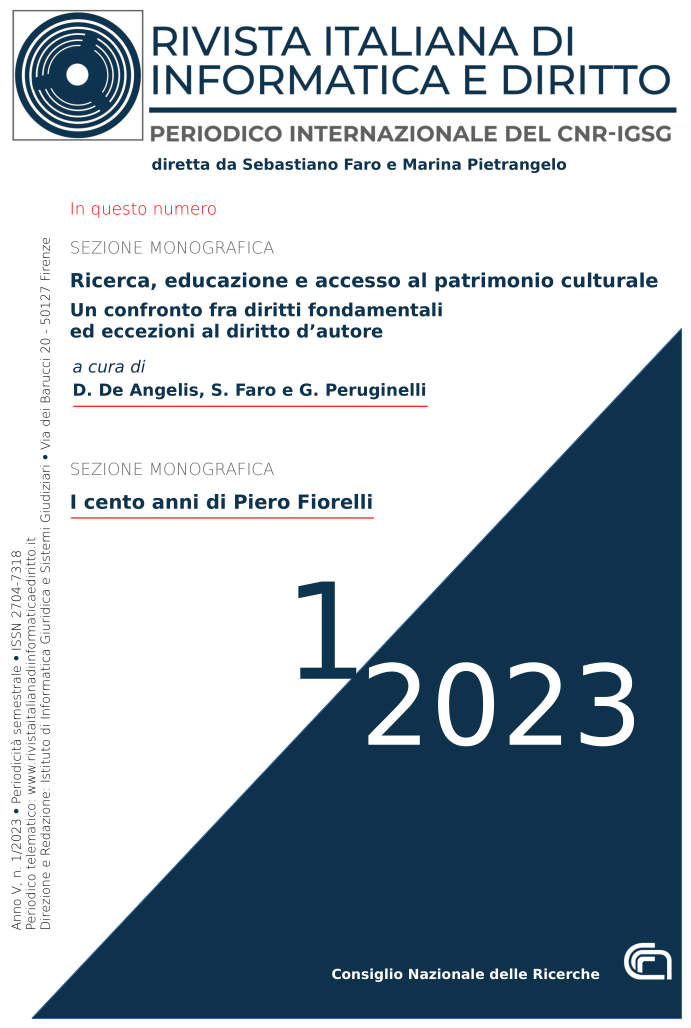From harmonization to fragmentation: objectives and failures of the CDSM Directive (2019/790/EU) in the fields of research, education and access to cultural heritage
DOI:
https://doi.org/10.32091/RIID0095Keywords:
Copyright, Exceptions, Fundamental rights, Harmonization, CDSM DirectiveAbstract
Directive (EU) 2019/790 on Copyright in the Digital Single Market (CDSMD) aimed at impressing a change of direction in the approach to EU copyright exceptions and limitations, opting for mandatory provisions that are not overridable by contract. This shift came as a reaction to the distortive effects of the optional nature of the exceptions introduced so far by the EU harmonization. However, Articles 3-6 CDSMD, which intervene on key issues for access to culture, cultural heritage preservation and right to education and research, leave to national legislators ample room for discretion on fundamental regulatory aspects, and do not offer any guideline on how to coordinate the new provisions with existing EU and national exceptions. More than one year after the expiry of the implementation deadline, the fragmentation of national solutions confirm the risks flagged before the approval of the Directive. Providing a mapping of the state of harmonization, this article offers (a) a “vertical” analysis of national divergences in the implementation of Articles 3-6 CDSMD and of their negative effects on the achievement of their goals; and (b) a “horizontal” assessment of the opportunities lost by national legislators, compared to the margin of discretions they had and vis-à-vis the need to coordinate old and new national provisions, and in light of their impact on the balance between copyright and access to culture, cultural heritage preservation and right to education and research.














 rivistariidATigsg.cnr.it
rivistariidATigsg.cnr.it